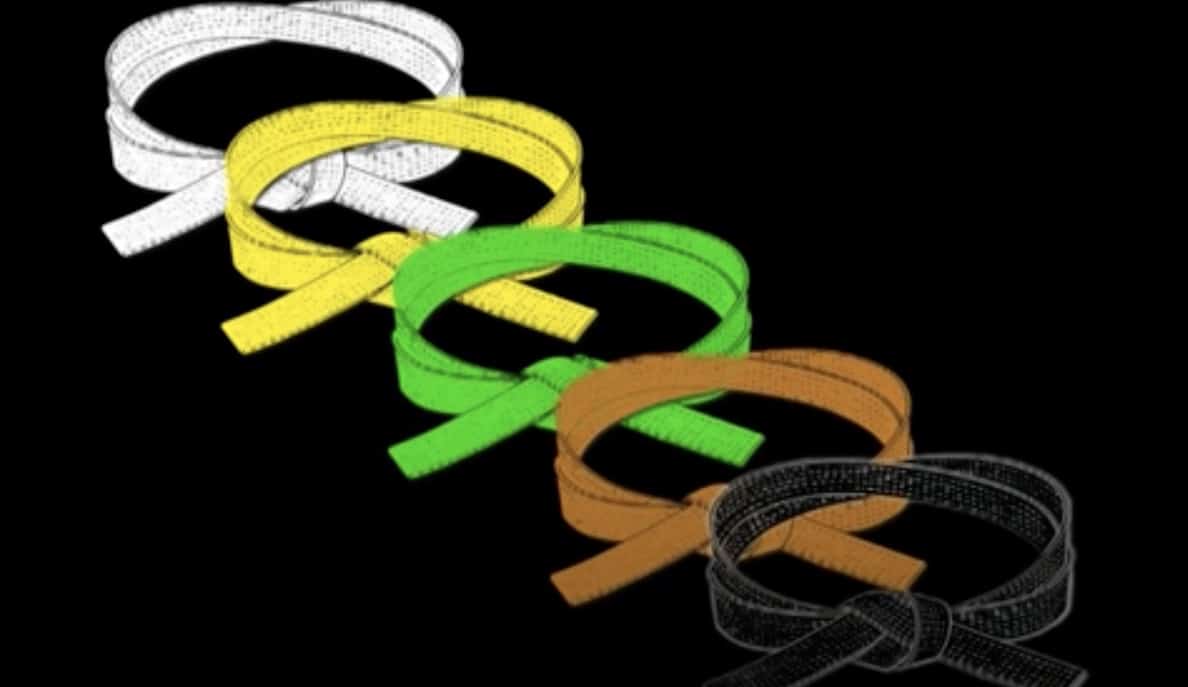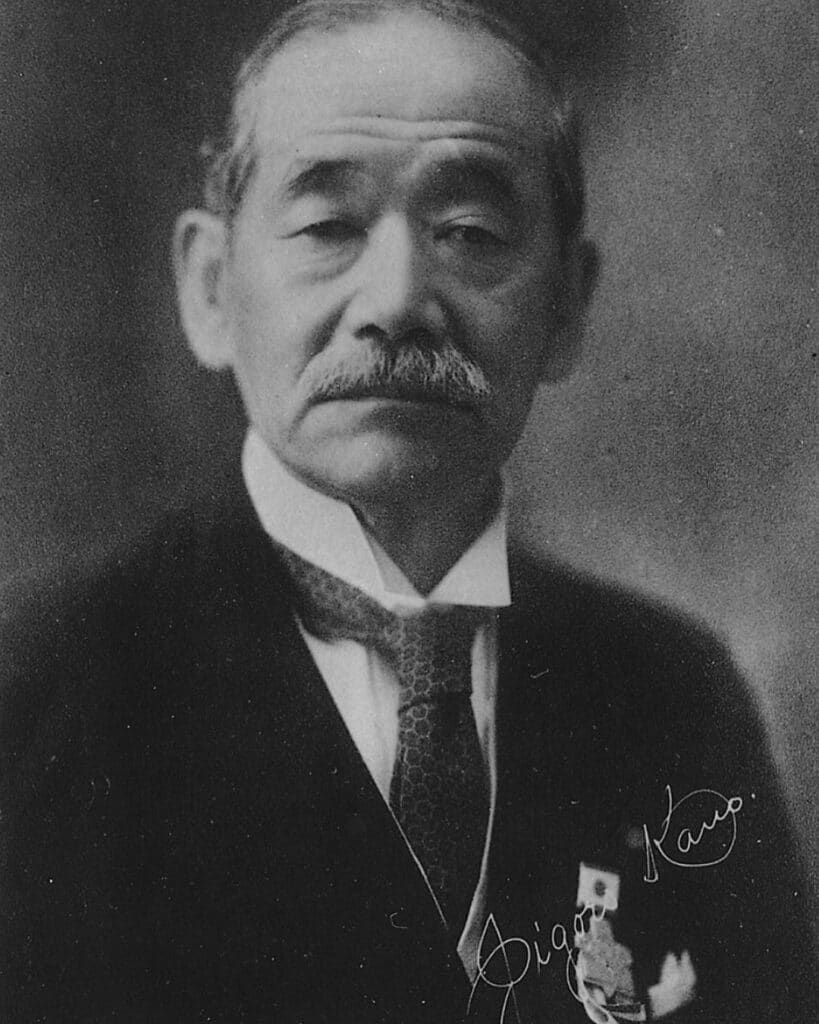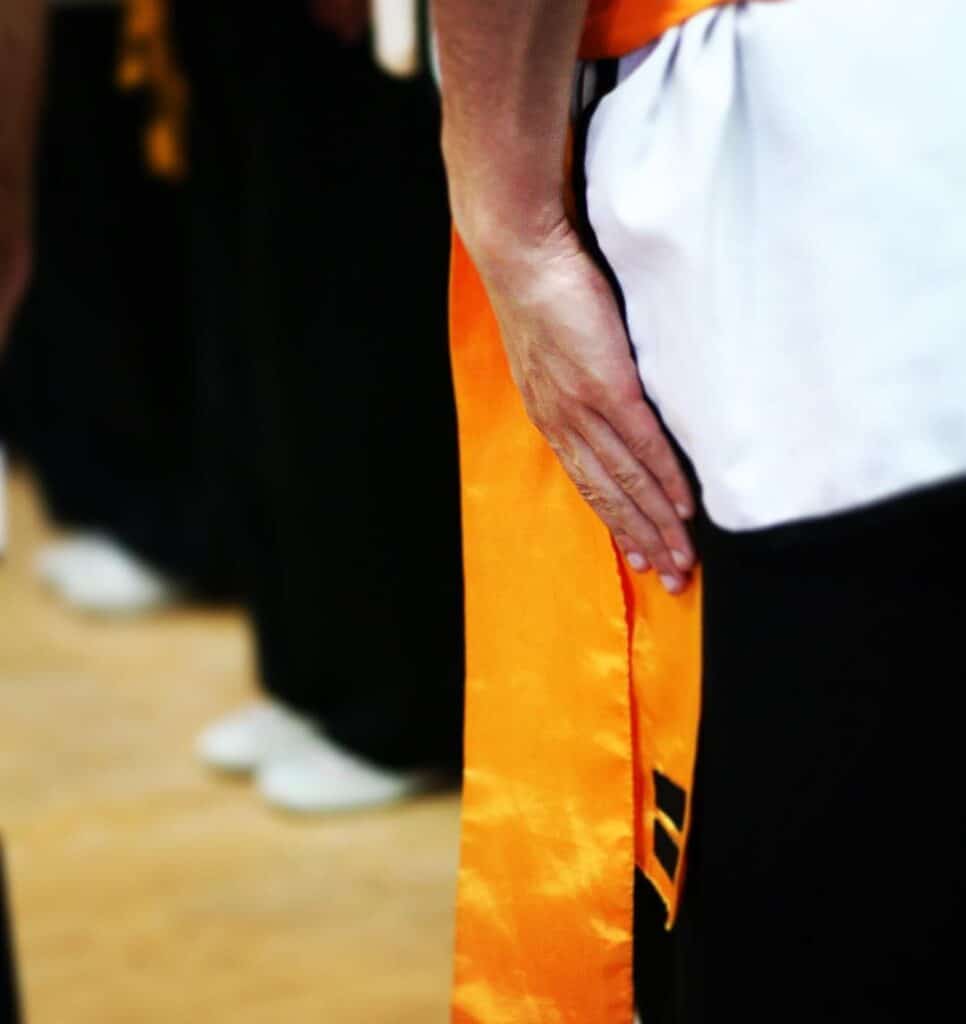Kung Fu Belt Order: Ranking System Explained

Questions about the Kung Fu belt order or ranking systems are commonly asked online. Since Kung Fu is such a broad term compared to other martial arts, explaining the ranking systems is somewhat complicated.
Here is our explanation of Kung Fu belt order. Explaining how Kung Fu rankings differ from other martial arts due to the different styles of Kung Fu. Along with our explanation, we listed some of the belt orders from different Kung Fu styles.
A Short History of Kung Fu
If you don’t already know, Kung Fu is not just one particular martial art, but many. Kung Fu or Wushu are blanket terms to classify all Chinese martial arts.
The term Kung Fu is actually any skill that you learn through practice. Wushu translated actually means martial art.
There are literally thousands of Chinese martial arts that are classified as forms of Kung Fu. Which makes trying to give a solid answer about Kung Fu belt order a little more difficult.
Kung Fu Belt Order Rankings?
What makes answering this question even more difficult about Kung Fu belt order is that rankings originally never existed. Rankings in martial arts have only existed since the early 1900s.
In styles of Kung Fu, a student would train under the master of the style until they became a master. No formal ranks were ever given to Kung Fu students.
It was originally the founder of Judo, Jigoro Kano that came up with a ranking system for Judo. Karate would later develop its own ranking system and other styles of martial arts would as well.
Due to this outside influence, styles of Kung Fu would adopt belt ranking systems and come up with their own.

Kung Fu Sashes (Not Belts)
In the ranking system within Kung Fu, they don’t refer to their rankings as belt. Instead, Kung Fu practitioners use sashes to signify their rank.
The sashes they wear are about double the width of belts worn in other martial arts. They also wear them on the side of their waists rather that at the center like most other martial arts.

What Types of Kung Fu Use a Ranking System
There’s no telling how many variations of Kung Fu use a ranking system to separate their student’s abilities. If there is a Kung Fu school near you, they most likely use some sort of ranking system.
Two most common styles of Kung Fu that use ranking systems are Shaolin Kung Fu and Sanshou.
The Kung Fu Belt Order
In the Kung Fu belt order that is the most used consists of 10 different colors that signify rank.
- White Sash
- Yellow Sash
- Orange Sash
- Gold Sash
- Green Sash
- Blue Sash
- Purple Sash
- Brown Sash
- Red Sash
- Black Sash
The Grouping of Each Belt
The ten sashes of Kung Fu our split in to three different groups between the eight sashes between white and black. White and black sashes signify the beginning and end of the journey through the Kung Fu rankings.
Novice Levels
- Yellow Sash
- Orange Sash
- Gold Sash
Intermediate Levels
- Green Sash
- Blue Sash
- Purple Sash
Advanced Levels
- Brown Sash
- Red Sash
The Significance of Each Kung Fu Sash
Like in all belt rankings, the colors within the Kung Fu belt order are all supposed to have some meaning.
White Sash
The white slash signifies a new beginning. White slashes are a blank canvas that are ready to absorb knowledge of the martial art.
Yellow Sash
The color yellow in Kung Fu is supposed to represent a ray of light. Students that receive their first promotion have received but a small light of what their potential could be.
Orange Sash
When a student reaches the orange sash level, they focus on the martial art alters. They go from being curious to being determined to be a proficient Kung Fu practitioner.

Gold Sash
This rank symbolizes the continuing determination of the student. At this rank, they are full of energy and open to learning more about their art of Kung Fu.
Green Sash
A green sash is like the student is a growing plant. Symbolizing the growth of the student as they continue developing their skills.
Blue Sash
At the blue sash level, a student transitions from just learning skills to training their mind and body. It is not enough to have the skills of a warrior, but you must have the calmness and demeanor of one.
Purple Sash
A purple slash symbolises the power and ambition of a student. They’re growing more confident and becoming stronger in their technique like a young lion, but still needing experience.
Brown Sash;
When a student earns a brown slash, it signifies that they are becoming more grounded to the earth. They are becoming a more stable practitioner and understanding the responsibilities that their rank holds.
Red Sash
A red sash symbolizes the energy and confidence of an experienced student. At this rank, a student is becoming one of the young leaders of their school. Not only are they honing their abilities, but they’re also passing their knowledge to the less experienced students.
Black Sash
A black slash signifies that you have become an expert at all of the techniques within your style of Kung Fu. To become a teacher in Kung Fu, it is a pre requisite to hold the rank of black sash or higher.
Becoming a Master
The colored ranks from white to black are only the beginning of the journey within Kung Fu. Practitioners really attain knowledge during the journey after these ranks.
Generally in Shaolin Kung Fu schools, you earn a degree every one to two years after black sash. When you reach the 8th level, you’re considered a Shaolin Kung Fu master.
How Long Does it Take to Master a Kung Fu Style?
On average, it generally take a student of Kung Fu at least 8 years to go through all of the ranks. To earn a black sash in this time frame would of course mean that you trained consistently.
To give you good time frame, let’s divide it by experience levels if you trained multiple times per week on average.
- Novice Ranks (Including White: 2 Years
- Intermediate Ranks: 2 Years
- Advanced Ranks: 4 Years
- Total: 8 years






